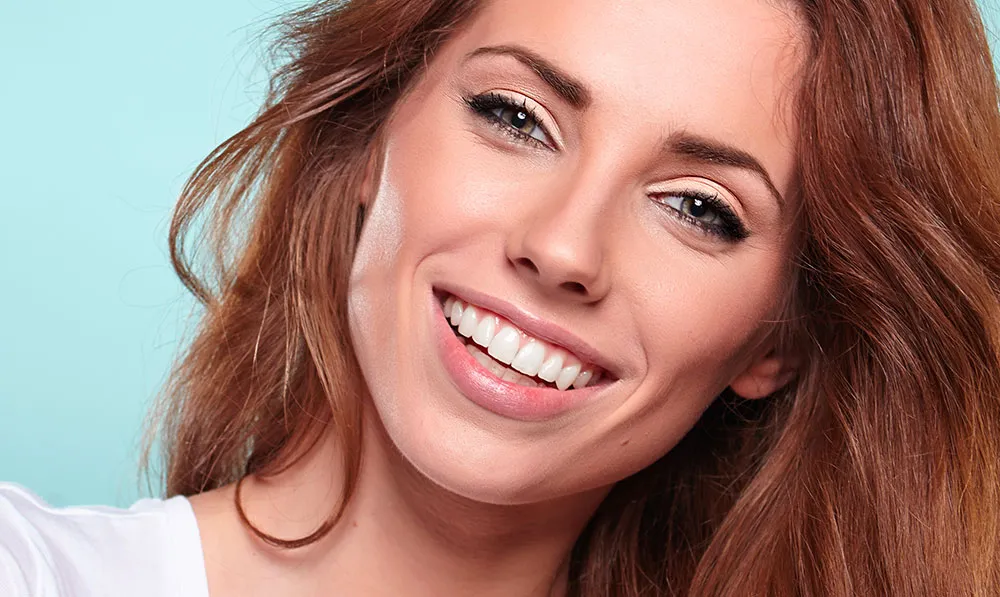Why Use a Teeth Whitening Editor
In today’s digital age, a dazzling smile is often seen as a symbol of health, confidence, and attractiveness. While professional teeth whitening treatments can be costly and time-consuming, a teeth whitening editor offers a convenient and accessible alternative. These editors allow you to subtly enhance your smile in photos, correcting discoloration and brightening your teeth with just a few clicks. Using a teeth whitening editor can save you money, time, and provide a level of control that in-person treatments may not. Whether you’re preparing a photo for social media, a dating profile, or simply want to boost your self-esteem, understanding how to use these tools effectively is a valuable skill. Furthermore, the best part is that these tools are often integrated into the photo editing software you already use, making it easy to incorporate teeth whitening into your regular workflow. The ability to quickly and easily improve your smile in photos is a powerful asset.
Benefits of Using a Teeth Whitening Editor
The advantages of using a teeth whitening editor are numerous. First and foremost, it’s a cost-effective solution compared to professional dental procedures. You can achieve similar results without the financial burden. Secondly, it’s incredibly time-efficient. Instead of spending hours at a dentist’s office, you can whiten your teeth in a matter of minutes using readily available software or apps. Moreover, it offers unparalleled control. You can customize the whitening effect to your preferences, ensuring a natural and flattering look. It’s also incredibly convenient, allowing you to edit photos anytime, anywhere, directly from your smartphone or computer. Finally, teeth whitening editors boost your confidence, allowing you to present your best self online and in your personal photos. The ability to subtly enhance your smile can significantly improve your self-image and how others perceive you.
Secret 1 Quick Editor Adjustments

When it comes to achieving a brighter smile, quick editor adjustments can make a world of difference. Start by accessing the ‘brightness’ and ‘contrast’ settings within your photo editing software. These are foundational tools that can dramatically alter the appearance of your teeth. Slightly increasing the brightness can make your teeth appear whiter by adding more light to the image. However, be cautious not to overdo it, as excessive brightness can make the image look unnatural. Similarly, adjusting the contrast can enhance the definition and clarity of your teeth, making them pop against the background. Experimenting with these basic settings first can often yield significant improvements. Many editors also offer quick preset filters specifically designed to whiten teeth, providing a one-click solution for a brighter smile. Remember to always review your adjustments to ensure they look natural and don’t introduce any unwanted artifacts or distortions.
Brightness and Contrast
The most basic yet powerful tools in your arsenal are brightness and contrast adjustments. Brightness controls the overall lightness or darkness of an image, including your teeth. Gently increasing the brightness can make your teeth appear whiter, as it reflects more light. Contrast, on the other hand, refers to the difference between the lightest and darkest areas of an image. Increasing the contrast can sharpen the edges of your teeth and make them appear more defined and vibrant. To use these tools effectively, start by making small incremental adjustments. If your teeth are appearing too bright, decrease the brightness. If they look dull, increase the contrast. Always look at the overall balance of the image; your teeth should look naturally bright, not artificially so. A good rule of thumb is to aim for a subtle enhancement rather than an extreme transformation, ensuring that your smile still looks realistic and appealing. Experiment with these adjustments in tandem to find the perfect balance.
Secret 2 Color Correction Tools
Color correction tools are essential for achieving a truly natural and appealing teeth whitening effect. These tools allow you to fine-tune the color of your teeth, addressing any yellowing or discoloration. One of the most effective methods is to use the ‘color temperature’ or ‘white balance’ adjustment. This tool allows you to shift the overall color of the image, often by adding a cooler tone. Moving the slider towards blue can counteract yellow hues, making your teeth appear whiter. However, it’s essential to do this subtly, as an overly blue tint can make your teeth look artificial. Another valuable tool is the ‘hue/saturation’ adjustment. This lets you target specific colors, such as yellow, and decrease their saturation, thus making your teeth less yellow. The key is to make small, incremental adjustments and preview the changes on your image before finalizing them. Some photo editors also offer a ‘selective color’ tool, allowing you to target specific colors within your image and make adjustments without affecting the rest of the photograph. The use of color correction tools, combined with careful experimentation, can help you achieve a naturally brighter and more attractive smile.
Selective Color Adjustments

Selective color adjustments offer a highly precise way to whiten teeth while maintaining the natural color balance of the rest of the image. Most photo editing software provides tools that allow you to target specific colors within a photo, such as yellow or orange, and make adjustments without affecting other colors. For teeth whitening, you can use this tool to isolate the yellow tones in your teeth and reduce their saturation or lightness. This approach ensures that the whitening effect is focused solely on the teeth, preserving the natural colors of the gums, lips, and surrounding skin. To use selective color adjustments, first, identify the specific color range you want to modify. Often, there’s a color picker tool to help you select the exact shade of yellow in your teeth. Then, you can adjust the hue, saturation, and lightness of that specific color range. Reducing saturation will make the yellow less intense, and increasing the lightness will whiten the teeth. Start with subtle adjustments and carefully observe the results. The goal is to achieve a brighter, whiter smile without altering the overall color harmony of the image.
Secret 3 Advanced Retouching Techniques
For more advanced teeth whitening, retouching techniques provide greater control and precision. One of the most commonly used tools is the ‘brush’ or ‘selection’ tool, which allows you to paint the whitening effect directly onto your teeth. This is particularly useful for addressing specific areas of discoloration or unevenness. When using a brush, it’s essential to adjust the brush size, opacity, and hardness to achieve a natural look. Start with a low opacity to build the whitening effect gradually and avoid harsh lines. The ‘clone stamp’ or ‘healing brush’ can be used to address small imperfections or blemishes on your teeth. These tools work by sampling an area of healthy tooth color and using it to cover imperfections. Using these tools with care prevents an artificial appearance. To prevent an over-whitened look, carefully blend the edges of the whitened areas with the surrounding teeth. Professional photo editing software also offers advanced features, such as ‘dodge and burn’ tools, for selectively lightening or darkening specific areas of the teeth. By mastering advanced retouching techniques, you can create a flawless and natural-looking smile in your photos.
Teeth Whitening Editor Brushes
Teeth whitening editor brushes are a powerful tool for achieving a natural and controlled whitening effect. These brushes allow you to selectively apply whitening to specific areas of your teeth, allowing for more precise control compared to global adjustments. When using a brush, start by selecting the appropriate tool within your photo editing software. Adjust the size of the brush to match the size of your teeth, and set the opacity to a low value, usually between 10% and 30%. This allows you to build the whitening effect gradually, layer by layer, to avoid an artificial look. Begin by gently brushing the whitening effect onto your teeth, focusing on areas that appear discolored or yellowish. Use multiple passes with the brush, gradually increasing the whitening effect. Pay attention to the edges of your teeth and blend the whitening effect seamlessly with the surrounding areas. You can also use the brush to correct uneven whitening, creating a balanced and natural-looking result. Experiment with different brush settings, such as softness and flow, to achieve the desired outcome. Using teeth whitening editor brushes requires patience and a steady hand, but the results can be remarkably realistic and effective.
Secret 4 Essential Editor Features

Beyond the basics, several essential editor features can enhance your teeth whitening efforts. The ‘masking’ feature is invaluable, allowing you to apply adjustments only to specific areas of your photo, such as your teeth. This prevents unintentional changes to other parts of the image. ‘Local adjustments’ offer further control, allowing you to selectively adjust brightness, contrast, and color within certain regions. The ‘gradient tool’ is useful for applying a gradual whitening effect, for example, making the teeth appear brighter towards the front. Many editors also offer built-in ‘smart selection’ tools, which can automatically detect and select the teeth for easy editing. Ensure your chosen editor supports non-destructive editing, meaning you can always revert to the original image without losing data. This is particularly important when working with sensitive adjustments like teeth whitening. Consider utilizing the editor’s ‘history’ panel to track your changes and easily undo or redo steps. Finally, explore the editor’s ‘preset’ options, which often include specialized teeth whitening filters to speed up the process. Understanding and utilizing these essential features will greatly improve your teeth whitening results.
Sharpening and Clarity
Enhancing the sharpness and clarity of your teeth can complement the whitening process, resulting in a more polished and attractive smile. The ‘sharpening’ tool increases the definition of edges and fine details, making your teeth appear crisper and more defined. However, it’s crucial to use this tool with caution, as excessive sharpening can create unnatural artifacts and emphasize imperfections. Start with a low sharpening setting and gradually increase it until you achieve the desired effect. The ‘clarity’ tool boosts the mid-tone contrast, enhancing the texture and details of your teeth. Use this tool sparingly, as over-clarifying can make your teeth look harsh and artificial. When adjusting sharpness and clarity, pay attention to the overall balance of the image. The goal is to create a naturally enhanced look, not an overly processed one. Experiment with the tools in combination, making subtle adjustments to find the perfect blend. Some photo editors provide specific sliders for sharpening and clarity, tailored to enhance facial features and achieve a more professional-looking result.
Secret 5 Editor for Natural Look
The key to successful teeth whitening in an editor is achieving a natural look. The biggest mistake is over-whitening, resulting in teeth that appear unnaturally bright and out of place with the rest of the face. The best approach is to focus on subtle enhancements, correcting discoloration and improving the overall brightness without making your teeth look fake. When editing, carefully compare the before and after images to assess the changes. Avoid drastic transformations and aim for a result that looks realistic and flattering. Consider the lighting in the original photo. Adjust your whitening accordingly, ensuring that the brightness and color temperature of your teeth match the surrounding environment. Don’t forget to take into account the natural variations in tooth color. Not all teeth are perfectly uniform, and a slightly imperfect look can appear more authentic than a completely white one. Ultimately, the goal is to present your best self while maintaining a believable and natural appearance. To achieve this, make small incremental adjustments and pay close attention to the overall color balance, texture, and lighting of the image.
Avoiding Over-Whitening

Avoiding over-whitening is paramount to achieving a realistic and flattering result. Over-whitening leads to teeth that appear unnaturally bright and often clash with the overall skin tone and color of the image. To avoid this, start with subtle adjustments and gradually increase the effect. Regularly compare the edited image with the original, paying close attention to the color and brightness of your teeth. If they appear too bright or noticeably different from the surrounding teeth, reduce the whitening effect. It’s also important to consider the lighting conditions in the photo. Teeth that are excessively white can look artificial under certain lighting conditions. Make sure the white balance and color temperature of your teeth match the lighting in the scene. Sometimes, a slightly less white appearance can look more natural and flattering. Furthermore, focus on improving the overall appearance of your teeth by correcting any yellowing or discoloration, rather than aiming for a stark white shade. The goal is to enhance, not completely transform, your smile. Always remember that less is often more when it comes to teeth whitening in an editor. Aim for a natural and balanced result that complements your overall appearance.
